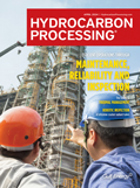Houston petrochemical fire rages, Texas expands air monitoring
Houston officials and environmental groups raced to expand air monitoring after a raging fire at a Mitsui & Co petrochemical storage site produced billowing acrid smoke that could be seen and smelled miles away.
The blaze at Mitsui unit Intercontinental Terminals Co in Deer Park, Texas, burned for
The fire began on Sunday when a leaking tank containing volatile naphtha, a fuel used in the production of gasoline, ignited and flames quickly spread to nearby tanks, ITC said.
Thick acrid smoke could be smelled miles away in Houston and was visible dozens of miles away. State and federal monitors said air quality was safe, but environmental groups disagreed and said they would conduct their own monitoring.
The Texas Commission on Environmental Quality said there was an increase in soot and other contaminants at ground levels around the site but levels remained below those considered unhealthy. Monitoring by an Environmental Protection Agency aircraft also found “no significant detections,” the EPA said.
But Neil Carmen, a director at the Texas chapter of the Sierra Club environmental group, said the airborne plume likely contained tens of thousands of milligrams of particles, well above levels considered safe.
The Environmental Defense Fund (EDF), a nongovernmental organization, was deploying 10 air-quality monitors to check for nitrogen oxides and soot around Houston and adding another 10 monitors in the near future, said Matt Tresaugue, an EDF spokesman. He said the city had requested the EDF monitors.
The tanks hold flammable liquids that are difficult to extinguish using water and foam suppressants. Five of the 15 tanks continued to burn Tuesday, while two have collapsed and volatile liquids in three others burned out, ITC said.
A local fire official said the blaze may have to burn itself out. Each tank holds 80,000 barrels, or up to 3.3 million gallons, of liquids that are used to boost gasoline octane, make solvents and plastics.
Gasoline prices on the Colonial pipeline, which sends fuel to the U.S. East Coast from Houston, were up on Tuesday between 1- and 2-cents a gallon over levels prior to the fire.
“I can’t tell you how long it will take to burn out,” said Harris County Fire Marshal Laurie Christensen at a morning briefing. “I’m not going to give you a timetable.”
Some of the water and chemicals have washed into the adjacent Houston Ship Channel that links the Gulf of Mexico to Houston, the nation’s busiest petrochemical port, ITC spokesman Dale Samuelsen said.
Pumps on two boats feeding water to firefighters malfunctioned for about six hours on Monday evening, he said. As a result, two more tanks caught fire. On Tuesday, ITC added a 15-person crew experienced in battling tank-farm fires as well as additional high-pressure pumps and suppressant foam.
“We have been up to this point in defensive mode” trying to contain the fire, said Samuelsen. “Because of the expertise these guys bring, the expectation is we’ll be able to go into offensive mode.”
Samuelsen said the burning tanks are within a






Comments